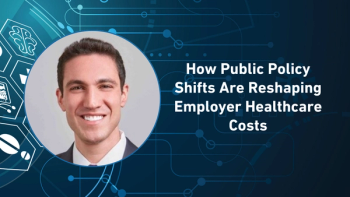
KOL Collaboration Series: What Are Pharmacy Deserts?
In this video interview with Pharma Commerce Editor Nicholas Saraceno, Jenni Zilka, SVP, community & specialty pharmacy and president, Good Neighbor Pharmacy, clarifies the meaning behind pharmacy deserts, along with reasons for their increase in prominence.
In the full video interview with Pharma Commerce, Jenni Zilka, SVP, community & specialty pharmacy and president, Good Neighbor Pharmacy, noted that pharmacy deserts are communities without access to pharmacies, hindering residents' ability to fill prescriptions and access healthcare services. These areas are often also healthcare deserts. Definitions vary by location: urban areas lack pharmacies within a mile, suburban areas within two miles, and rural areas within ten miles. Approximately 35 million people live in pharmacy deserts, making this issue pressing. Factors contributing to their rise include reimbursement pressures, decreased foot traffic post-COVID, and the inability of pharmacies to bill for services beyond prescription filling. Independent pharmacies, often serving underserved communities with a majority of government-paid patients, are particularly affected. Zilka also alluded to legislation that is helping to improve patient access.
A transcript of Zilka’s conversation with PC can be found below.
PC: What exactly are pharmacy deserts, and why have they become so prominent?
Zilka: If you think about a pharmacy desert, it's kind of exactly how it sounds. It's communities where there is no pharmacy, where people cannot fill their prescriptions, but as you know, in many of these pharmacy deserts, they may also be healthcare deserts, where the pharmacy is already playing the role of providing necessary services to maintain good health all around, well beyond just dispensing prescriptions. The definition—which is kind of an industry standard of what a pharmacy desert is—is really where there's no pharmacy, meaning there's no care for the local residents and patients of that area. And it's a little different, depending on if you're urban, suburban or rural, but essentially, it's a one-mile radius. If you're in the city, if people live more than a mile away from the nearest pharmacy; if you're in the suburbs, it's two miles. If you go to more rural settings, then it's 10 miles. Our data shows us that there's an estimated 35 million people live in a pharmacy desert, meaning they don't have access to a pharmacist or perhaps healthcare in general. So that's what a pharmacy desert is.
You asked why we are talking about pharmacy deserts, and why they are more prevalent than perhaps they have been in the past. Candidly, it's just because pharmacies are of all sizes and shapes. Of course, we're here today representing independent pharmacies, but regardless of whether it's an independent or a chain pharmacy, they are really at risk of going out of business. You're probably reading about it in the news these days, but essentially, there're a few key factors that are driving that.
The first is reimbursement pressure. They are continually being reimbursed less for prescription drugs on a day-to-day basis. And then I think as importantly, when you think about COVID, it drove a lot of traffic into the pharmacies. Since COVID is behind us, the need isn't as great. They're not getting as much food foot traffic either, coming into the pharmacy as they were during COVID. It's a combination of reimbursement pressure along less foot traffic. but I think as importantly, not having a vehicle to bill for some of the services that they that they provide, goes well beyond filling prescriptions. What's interesting about independent specifically is that the makeup of their patient base is typically over 50% government paid, meaning state Medicaid or Part D. These are already underserved communities. These are where there's a strong need for a healthcare provider, and that's where they typically where they typically reside.
Newsletter
Stay ahead in the life sciences industry with Pharmaceutical Commerce, the latest news, trends, and strategies in drug distribution, commercialization, and market access.



